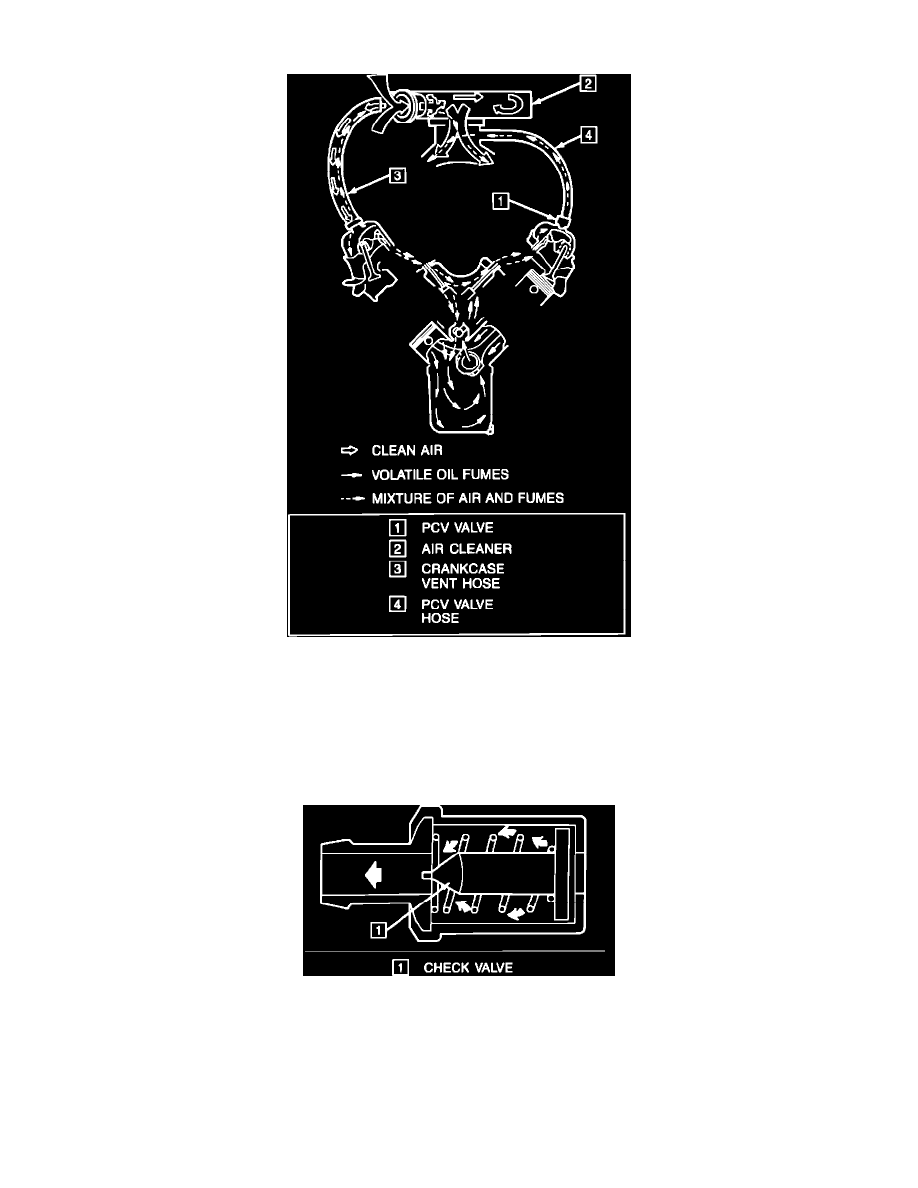Seville V8-300 4.9L (1991)

Positive Crankcase Ventilation: Description and Operation
PCV Flow
A Positive Crankcase Ventilation (PCV) system is used to prevent blow-by gases from escaping to the atmosphere by routing them through a vacuum
controlled ventilation valve, into the intake manifold. Fresh air from the air cleaner is pulled into the crankcase, mixed with blow-by gases and then
combined with the air/fuel mixture and are burned in the combustion chamber. The primary control is through the PCV valve which meters the flow at a
rate dependent upon manifold vacuum. To maintain idle quality, the PCV valve restricts the flow when intake manifold vacuum is high. If abnormal
operating conditions arise, the system is designed to allow excessive amounts of blow-by gases to back flow through the crankcase vent tube into the air
cleaner to be consumed by normal combustion.
PCV Valve Cross-Section
PCV VALVE
The PCV valve, consists of a needle valve, spring and housing. When the engine is off, the spring holds the needle valve closed to stop vapors from
entering the intake manifold. When the engine is running, manifold vacuum lifts the valve off its seat and allows crankcase vapors to enter the intake
manifold. In case of an engine backfire, in the intake manifold, the valve closes. This stops the backflow of gases and prevents the ignition of fuel vapor
in the crankcase. During certain engine conditions, more blow-by gases are produced than the PCV valve can handle. In this case, the excess gases are
returned through the air intake tube to the air cleaner or intake manifold, where they are burned in the combustion chamber.
